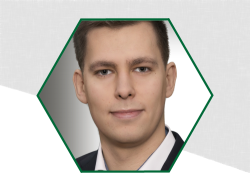In recent years, laser processes have taken an ever-increasing market share in the manufacture of components. The development of new, improved beam sources with corresponding system technologies and the falling investment costs are the keys for the success. Especially high frequency beam oscillation has a great potential in laser beam welding and cutting. The main obstacle for the widespread breakthrough of high frequency beam oscillation is the still insufficient understanding of the underlying physical mechanisms. Gaining a deeper insight is essential for process optimization.
The in-situ observation with X-ray enables the visualization and analysis of these highly dynamic processes inside the workpiece. The goal of the performed experiment described in this paper was to in-situ analyze the structural evolution of and defect generation in laser welding beads of different aluminum-based alloys. A fiber laser (max. 600 W power) including a beam scanner control system for rapid beam guidance was used.
Of general interest was the comparison between static and oscillated beam guidance and the effects on the joining procedure. The paper shows first results of the analysis of the melt pool behavior and seam formation as well as the formation of seam irregularities during the laser process. In the simplest case, radiographs were taken, i.e. 2D projections of the X-ray absorption coefficient distribution within a material. Thereby recordings from 2000 up to 40000 fps could be generated.
Furthermore, tomoscopies â the continuous acquisition of tomographic (3D) images - up to 100 tomograms per second â could be generated with proven equipment, whose main components are a high-speed rotation stage and camera system. The findings help to get a better understanding of keyhole phenomena as well as effects of turbulent melt flow such as pore formation and guide to solutions for preventing them. So first results for high frequency beam oscillation processes including melt pool degassing and porosity reduction will be shown and discussed.
Keywords
- Aluminum
- Hf-Scanning
- High Frequency Beam Oscillation
- Laser Beam Welding
- X-Ray

